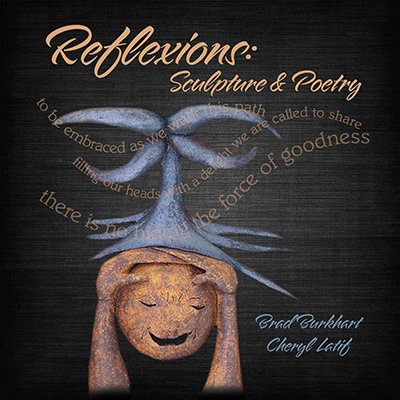Mostly we tend to think of art in spiritual practice as inspirational. The idea is that if we surround ourselves with beautiful pictures or objects they make us feel more centered and inspired to pursue spiritual practice and/or they create a sense of joy within us and enjoyment of our world. Other religious art forms like Tibetan or Hopi mandalas are used as a way of centering in meditation practice in order to detach from our ego based relationship with the world. The first orientation comes from opening the heart to loving emotions while the second comes from the willful exclusion of ambition. However both these spiritual uses of art focus on the individual and not the community. Community is created out of such efforts only as a bi-product of individuals sharing their personal practice. But, we often “agree to disagree” on individual spiritual practice and thereby distance ourselves from each other.
I would like to discuss a third use of art for human spiritual development which I have been exploring for the last 20 years. This approach uses intuition in an artistic process to access past, present, and future relationships with the other spirits (people, plant, and animal) on the planet. This art builds connectivity based on communal insights rather than individual ones. This artistic world of mine is a place of myth and story we have lost touch with. For, although we learn, repeat, and even enact past stories, we no longer create our own. And therefore, while these stories sometimes give us lessons, they do not create new culture. The reason we are out of touch with myth making in modern culture is that we have been taught to believe the real world is that of the physical senses and the rational mind which can be proved by science i.e. seen, touched, or smelled. The intuitive world of the imagination is considered unreal.
My art work begins from a different place. Rather than looking outside myself to draw what is real, I have for the last 20 years been drawing random lines on paper. At first I thought this would lead no where; but, I quickly discovered if I merely persisted, images began to take shape on my drawing tablet of people and characters from another “real” world. At first, I thought these sketches were merely personal musings, dream images created by piecing together parts of events I had witnessed in order to process personal conflict. But gradually, over time, it became clear to me others knew more about the images than myself and I found these images were often from cultures which I had never visited or had any previous knowledge. I came to conclude they come from what Carl Jung has called the collective unconscious.
It became clear to me one day my drawings needed to be transformed into a more solid medium to be shared with others. I began to translate the images into clay relief panels. (10″ x 14″ or later 14″ X 22″). I began to show these clay reliefs in 1989 and I quickly discovered they were creating a different relationship with art than what people had come to expect. Rather than focusing on individual responses to pieces, I found the best way to “name” each panel’s story was to bring together groups of people who each had a piece of the puzzle. Then I noticed that, as we would struggled as a group to “name” the story behind the piece, we found ourselves coming closer together as individuals because we realized we each had a piece of the puzzle. Amazingly, although initially the “stories” seemed to be about myths and stories from the past, as we discussed them further, we found they addressed the needs for spiritual development in contemporary culture. I began to see there is a third use of art we are only now beginning to grasp again. That is the use of art to solve our challenges of survival as a community by creating meaningful and ecologically sane connections within ourselves, others, and with the natural world. It is my job as an artist to intuitively access images of what this process looks like and then the job of the community to decipher their meaning. Please visit my website at: https://www.burkhart-sculptor.com to see some of my works so that you may begin to become part of this process yourself.
Editor’s Note: You can view Brad’s clay relief panels in April of this year at SanDiego’s ArtWALK 2001 or you may to visit his gallery (BEC Gallery) on the corner of Biona and Adams in Kensington. Contact him at bradburkhartsculptor@gmail.com



